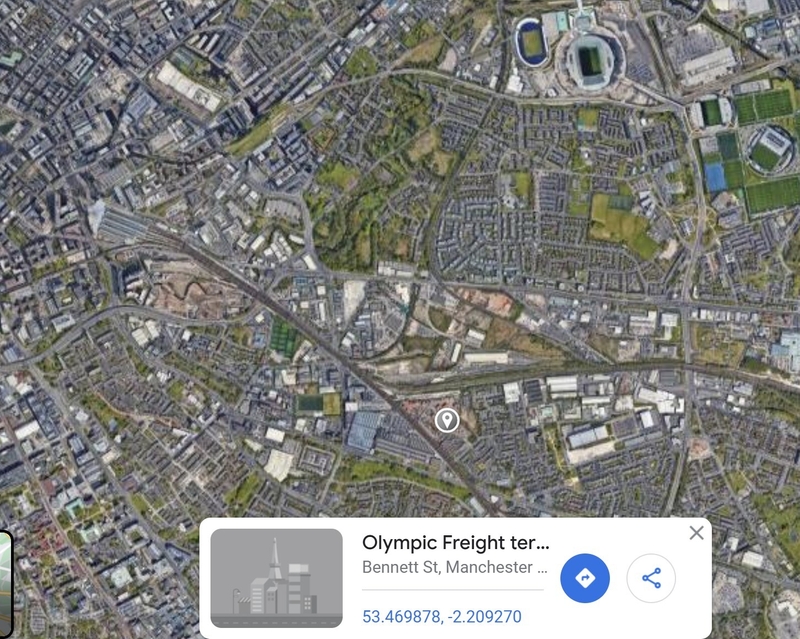A long time before these scenes it was a bit more industrial for Manchester City
Manchester has wonderfully eccentric stories to tell. We'll be revealing these as an occasional series.
This is Manchester City's week (even grudging United fans in the office concede that) so let's start with a story featuring the club long before the scenes on the picture above were a twinkle in the eye of supporters.
“Did you see that goal?”
“No, a train got in the way.”
Between 1887 to 1923 that may have happened at Manchester City’s first real stadium, or ‘ground’ as we used to say.
The small north-eastern stand was on the other side of rail lines
That was the Hyde Road ground which wasn’t on Hyde Road but on Bennett Street between the main rail line to London and Galloway’s boiler works.
After the move the club changed its name from West Gorton to Ardwick AFC after a desperate search for a home. The ground was so basic to begin with teams changed in the local pub, the Hyde Road Hotel. The club would change its name to Manchester City in 1894.
Stands started to arrive in 1888 and this is where the trains come in, literally. The site was so cramped that the small north-eastern stand was on the other side of rail lines transporting boilers and parts to and from Galloway’s boiler works. Yes, the other side, look at the map below from 1915.
Did trains block the view of games?
Apparently so, according to the guru of knowledge that is Gary James who responded to a question from Confidentials.com with: 'They used to take the industrial boilers out of the boiler works on the line and I've stories of boilers getting stuck at half time and the people in the Boys Stand (the one on t'other side of the tracks) getting somewhat frustrated.'
Surely this was and remains a unique feature of any football ground: exceeding the strangeness of entering Luton's Kenilworth Road through houses and over backyards.
NEXT WEEK: The forlorn French woman, the sad walls and the missing city

Hyde Road wasn’t a small stadium either with a capacity of 40,000 - along with Thomas the Tank Engine and friends. It hosted not only Ardwick AFC/Manchester City games but important FA Cup matches and was the first stadium outside London to welcome a monarch in the shape of King George V in 1920.
The location was never satisfactory so for the 1923/1924 season a massive new stadium with a capacity of 80,000 was ready at Maine Road. This didn’t include a train line through part of it but did include a gypsy curse, although that’s another story.
Meanwhile the Hyde Road site became a Manchester Corporation tram workshop. Parts of the football stands were dismantled and parts recycled in other grounds. Remarkably, even in 2022, part of Hyde Road lingers on incorporated into the main stand of Halifax Town’s Shay stadium.
This is the site as it is today (see below), a rundown corner of the rundown Olympic Freight Terminal with former tramlines still running across the cobbled area.
All together now: "There's only one Thomas the Tank Engine, one Thomas the Tank Engine..." "City, City, has the best trains in the land and all the world."


If you like this story you will like:
City's homecoming parade
Gary James's and why City and United had never met in a final before 2023
Get the latest news to your inbox
Get the latest food & drink news and exclusive offers by email by signing up to our mailing list. This is one of the ways that Confidentials remains free to our readers and by signing up you help support our high quality, impartial and knowledgable writers. Thank you!

















